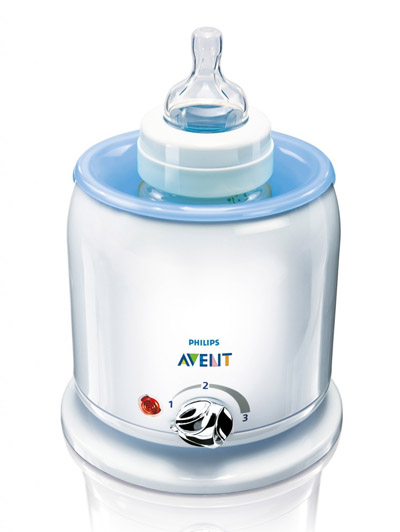Last year, when the wife and I were blessed with a little bundle of joy, I decided to write all about our experiences in an article called “Baby Tips for the Hawaii Father to Be“. Since then, we’ve learned quite a bit (more) about a raising a baby, so here we are again, ready to share (a.k.a. braindump) the knowledge we’ve accumulated over the past year to help you future parents prepare for the wild ride ahead.
Month 1:
We last left off leaving the hospital and starting our adventures in home care. The first thing you’ll notice is that baby is an eating & sleeping machine. She’ll hardly do anything besides that so interacting during awake time is challenging but fun.

Awake and curious at barely 15 days old
It’ll seem like baby is always scared or in shock, but it’s just because everything is so new to her. She’s just trying to figure things out and process everything. Give her time to take it all in. Also, don’t expect to get any smiles from her any time soon. She’ll have a stone cold, “World Series of Poker” face (Pa-pa-pa-poker face, Pa-pa-poker face! Sorry I had to!) and it will be like that for at least a few weeks/months. Be patient.
Unless your wife has magic boobs, she will probably have to go through a “training” period (so to speak) to properly learn how to breastfeed baby. From what I’ve heard and seen, breastfeeding is not as easy as you may think. Pain from engorgement, getting baby to actually latch on, and getting milk to flow regularly are just some of the challenges new moms face. I admire wifey for her dedication and persistence through it all. She was determined to not resort to baby formula and succeeded. If you feel the same way, keep at it, it’ll get better. Trust.
At the end of each month, I’ll attach the tweets that I actually sent out that month to give you (and me) an idea of what I was going through real-time! I’ll also post some product tips, straight from the wifey’s mouth. Here are the tips and tweets for month 1:
Wifey’s Tip Corner:
|
Tweets:
|
Month 2:
Much of the same during this month of baby’s life: nonstop eating, sleeping and pooping. By this time, you’ll probably start to figure out her different cries. Yep, believe it or not, they are subtle differences based on if she’s crying due to a wet/dirty diaper or because of hunger or because she’s tired/sleepy.
For us, during this time, we were challenged with trying to get her weight back “on track” (based on the national standard). Although, babies tend to lose weight after birth before gaining it back several weeks later, our doctors thought that she needed to gain back even more weight. Personally, I thought we were doing just fine (we didn’t miss a meal and baby wasn’t complaining of hunger), but the doctors kept telling us to feed her every 3 hours regardless of sleep schedules. That meant, waking her (and us) up just to feed her (we were feeding regularly every 4 hours). This was coupled with another challenge we faced due to a bout with thrush on baby’s tongue. After every feeding, we had to apply Nystatin (antifungal medicine) with Q-tips, or risk it spreading throughout the rest of her mouth or to mom. Over time and a lot of hard work (mostly by mom), baby was practically thrush-free and back on track…

At 1 month and 1 day
At her 2 month check-up (your first “official” one after birth), she weighed in at 11 lbs 6 oz (60.41%) and measured 58.4 cm (23″) (70.16%). The circumference of her head was a whoppin’ 15.98″ which was in the 87.54% range for her age group. Guess she got her big head gene from daddy! 😛
At this check-up, she also had to get three shots (two in her left leg and one in her right leg) and one dose orally. They contained diphtheria, tetanus & pertussis (DTaP), and vaccines for hepatitis b (HepB), haemophilus influenza type b (Hib), rotavirus (RV), pneumococcal conjugate (PCV), and polio (IPV). Not a fun experience for baby, but a mandatory part of the process. (Click here for the 2012 Recommended Immunization Schedule for Babies – PDF).
On the days following her shots, I would try to avoid planning anything major. Babies sometimes get a reaction (fever) from the shots they receive, so I would try to stay close to home in case baby needs to rest.
Wifey’s Tip Corner:
|

Baby comfy in her Snuzzler and having fun in her Whale of a Tub bath
Tweets:
|
Month 3:
Here’s when things start getting fun. Baby will start to smile and react to certain things, while cooing will become a regular occurrence. She’ll finally become more than just a moving, breathing doll. You’ll start to see more personality out of her.

Hooray!
Hate to be a downer, but this is also about the time when SIDS (Sudden Infant Death Syndrome) starts rearing its ugly head. Statistically it tends to take place around the 2-4 month mark. Be sure to keep a careful eye on your little one(s)!
One way to minimize the risk of SIDS is to do what my wife did. It’s pure genius. Every day, she would put baby on her tummy to get her used to using her arm, back and neck muscles to maneuver her head from that position. Baby training if you will. The more baby strengthens those muscles and can control her head, the less likely it will be for her to suffocate. (Note: Be sure this is a supervised activity. Babies are too young at this age to be left alone in this position).

Baby practices lifting her head
This is also probably a good time to start training baby on how to drink from the bottle. Yes, there is actually a difference. The end of mom’s maternity leave is quickly approaching so replacing a meal or two with a feeding from the bottle for practice is a good idea. This way, when mom goes back to work, baby will already know how to feed without her actually being there.
Wifey’s Tip Corner:
|
Tweets:
|
Month 4:
For us, this is when wifey had to go back to work. Be sure you’re ready to take on the responsibility of infant care all by your lonesome. No joke, this is one of the first pictures I took of baby/daddy alone time. Looks like baby didn’t have much faith in daddy’s abilities.

Baby is worried about my parental skills
I was nervous as all heck, but, really, it was much easier than expected. Duck soup. In fact, I had it down to a science:
- 5:30am – Mom feeds baby before heading to work.
- 6am – Baby is still sleepy so I rock her to bed.
- 7-8am-ish – Baby wakes up and I play with her, read to her, etc.
- 9:30am – First feeding from bottle.
- 10am – Field trip to the grocery store and to pick up lunch. Baby often sleeps during the field trip. If you’re the type who likes attention, you’ll definitely get it from all the young and old aunties who see the baby in the stroller. 😛
- 11am – Get home and if baby is still sleeping, scarf down lunch as fast as possible. If she wakes up, play with her until she inevitably gets sleepy. When she sleeps, scarf down lunch. 🙂
- 1:30pm – Second bottle feeding of the day.
- 2pm – Play it by ear. Sometimes baby is sleepy (yes, again!) or, if up, play/read with her.
- 4pm – Take baby for a stroll around the neighborhood.
- 5pm – Mom gets home to feed baby breastmilk.
So really, I was just responsible for two feedings. Not too bad. Manageable. It’s when baby gets fussy that the entire day’s schedule gets thrown off. Once, she couldn’t latch on to the bottle’s nipple so she just kept wailing and wailing. I didn’t know what to do. Eventually, she got exhausted and fell asleep. *sigh*

Typical pose
Oftentimes, it is not easy for moms to pry themselves away from baby after spending the last 3 months bonding together. I’ve heard stories of moms randomly crying throughout the day because of detachment issues. My wife wasn’t too bad (at least from what she’ll care to admit to me 😛 ), but we made the transition a little smoother by me taking two weeks of vacation time the very day she went back to work. I would email pictures of baby to her throughout the day and tell her what we were up to and what baby was doing, and that seemed to be enough to get her through the day. Wifey even admitted that she would look at the pictures while she pumped because it actually helped her bring down more milk. Strange right? Don’t ask.
I still remember both of their faces after wifey came home after her first day back at work. The second the door opened, baby jumped a little in my arms (from excitement) and wifey started to tear up. Priceless! If you’re able to do the same (take off from work to ease the transition), I would highly recommend it. It’s probably easier on baby too as she’ll at least see one familiar face during the day.
We were also super fortunate to have both moms willingly volunteer their valuable time to help watch baby. In fact, we actually had to create a weekly schedule or they would’ve been vying for even more time with baby! 😛

Two amazing grandmas
We realize that many do not have this luxury so we were definitely very grateful and appreciative of the fact that we had one less thing to worry about (baby care). When my two weeks of vacay were up, we had the peace of mind knowing that our precious child would be in the most loving hands.
The 4th month marks the time for another doctor visit and another round of shots. She was given the same immunization as the 2 month visit, minus the HepB: diphtheria, tetanus & pertussis (DTaP), and vaccines for haemophilus influenza type b (Hib), rotavirus (RV), pneumococcal conjugate (PCV), and polio (IPV). (Click here for the 2012 Recommended Immunization Schedule for Babies – PDF). Statistically speaking, our baby was growing fast. She was in the 80.75 percentile for height (25.25″), 81.89 percentile for weight (15 lb, 6 oz), and 93.35 percentile for head circumference (17.01″). Oh yeah!
Product-wise, our friends Jaymie and Chad gave us an Avent Bottle Warmer, which was a HUGE life saver. All the wife had to do was pump her milk into the bottles and throw them in the fridge (with dates attached). When it was feeding time, I would just grab one of the bottles (the oldest, non-expired one), throw it into the warmer (filled with water) for 4-5 minutes and poof, it was ready. Not sure what we would’ve done without it. Heating up a pot of water on the stove would’ve taken waaaay too long for a crying, hungry baby.
Be sure to also invest in a bottle sterilizing system. Washing the bottles alone won’t always kill all the bacteria that babies aren’t yet immune to. This sterilizing system uses water, heat and steam to clean your bottles, nipples, etc., via the microwave or A/C power.
Aside from feeding and sleeping (and pooping), there’s other bonding time to experience with each other. This is an ideal time to read to her for a couple reasons. One, it’s good for her educational/cognitive development, and two, baby won’t move. Good luck trying to get her to keep still once she learns how to roll over or sit up. LOL!
Speaking of sitting, this is also a good time to practice propping her up (while supervised) for short periods of time. This will help train her sitting up muscles. Be sure you are on a soft surface (bed) or have a pillow behind her. The worst thing to happen is her falling backwards onto her head.
And finally, this is likely the time you’ll start getting cabin fever. Whereas before, you were afraid to go out and “expose” your fragile infant to the elements of the world, this is when you’ll start wanting to explore and go out as a family. Do it. You/wife/baby can handles (Randall)!
![Family outing [Photo Credit: Minna Sugimoto]](/wp-content/uploads/2012/06/2012-06_babys-first-year-010.jpg)
Family outing [Photo Credit: Minna Sugimoto]
Wifey’s Tip Corner:
|
Tweets:
|
Month 5:
By this time, you should be getting used to the daily routine you folks created for yourselves. For us, it was a nonstop feeding, sleeping, pooping frenzy (as mentioned above), although our baby would sometimes go days without pooping before dropping the bomb! (Future daughter, I apologize for embarrassing you just now 😛 ).
She may also be drooling up a storm and starting to suck on fingers (hers or anyones). Our daughter never really got into the thumb, but that index finger gets a lot of action. Baby may possibly start to teethe as well. Some babies get fevers when they start teething so be cognizant of that. Be also on the lookout for various growth spurts. When they go through this, they will have a hard time sleeping and will cry for hours on end.
Baby will be more active, trying her best to move around and roll over. This is the month when our baby turned over on her own, whereas before, she would get stuck in one position and we would have to help her.

Baby rolling over
Opinions differ, but they say that you are supposed to be able to start feeding babies some soft “solids” at this age. We were already part way through the month so we just decided to wait until the 6 month mark for this.
At this point, you’ve probably also realized that your life will never be the same again. Those spontaneous nights out with the boys? A distant memory. For those, you’ll have to plan for weeks in advance. Haha! All those TV shows you used to watch religiously? You’ll end up recording it on your DVR, thinking you’ll have time to watch it later. Nice try. You’ll never end up watching it. It pained me to delete an entire season of “The Ultimate Fighter” without ever watching a single episode. And travel? Fuhgedaboudit! Outside of a rare trip to Vegas (special trip for my Brother-In-Law’s bachelor party), this boy has been stranded on Oahu for the last several years (pre and post birth). Not easy for someone whose main passion is traveling. But if you think about the reason why, there’s no comparison. I’d much rather be with my family than anywhere else in the world.

My world
Wifey’s Tip Corner:
|
Tweets:
|
Month 6:
Congratulations! You made it to the 6 month mark. Halfway to 1 year! Things continue to get interesting during this time as you will start introducing solid foods to baby’s diet. This not only means more involvement from dad (more than just breastmilk), but it also means smellier poop! Enjoy! 🙂

I’m too cute to have smelly poop!
To prevent the development of allergies, it is recommended to stay away from feeding baby dairy products (milk, cheese, etc.), nuts, chocolates, and honey.
Our little squirt seemed to get constipated here and there, which, from what we understand, happens when you start feeding solids. One helpful tip we got was to feed baby the “P” fruits to combat constipation: Pears, Peaches, & Prunes. If they still don’t poop, you may have to turn to suppositories to assist in that department.
Month 6 also means yet another doctor’s appointment and another round of shots. She got the same shots that she did at the 2 month mark: diphtheria, tetanus & pertussis (DTaP), and vaccines for hepatitis b (HepB), haemophilus influenza type b (Hib), rotavirus (RV), pneumococcal conjugate (PCV), and polio (IPV). The good news is that this is the last round of shots until the 1 year appointment. (Click here for the 2012 Recommended Immunization Schedule for Babies – PDF). I don’t have the exact measurements, but I do remember that baby’s head circumference at this appointment was off the charts (over 100%)! Thaaaat’s mah girl! 😛
Wifey’s Tip Corner:
|
Tweets:
|
That’s it for part 1 (the first 6 months). Sorry, it’s soooo long, but I want to make sure I cover everything for when that time comes for you or your friend(s). If you have any tips to add, feel free to message me or leave them in the comment area below and I’ll add them to Part II.
[youtube=http://www.youtube.com/watch?v=g6fspcsRH8U&w=500&h=400&rel=0] Tarp Surfing in Hawaii – VH07V Style (Click to Play!)
